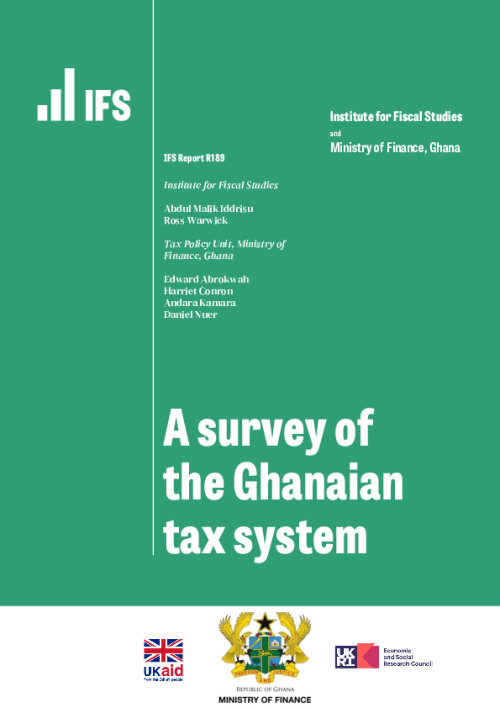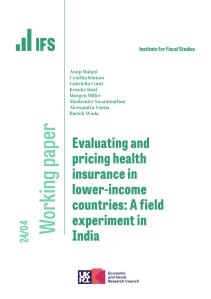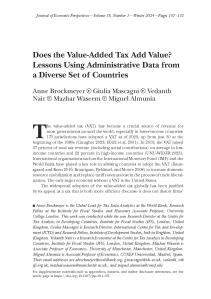In its 2020 Ghana CARES ‘Obaatanpa’ programme, the Government of Ghana emphasised the need to improve domestic revenue mobilisation in order to ensure the realisation of its medium-term fiscal policy and development objectives. In the context of ambitious revenue mobilisation goals and a challenging fiscal outlook, the design of the country’s tax system is a crucial issue for policymakers.
In this report, we provide a comprehensive overview of Ghana’s tax system. This is intended as a repository of key information for researchers, policymakers and the public, as well as highlighting aggregate patterns of note as a first step for identifying challenges and areas for reform.
Key findings
- The design of Ghana’s tax system is a crucial issue for policymakers. This is especially true in light of a challenging fiscal outlook, with overall government budget balance reaching –11.7% of GDP for 2020 and spending on compensation of employees and debt repayment exceeding 100% of tax revenue.
- At 13% in 2019, Ghana’s tax-to-GDP ratio remains far below the government’s target of 20% by 2023. Though this ratio is 5 percentage points higher than in 2000, it has remained at the same level since 2017.
- Much of the growth in Ghana’s tax revenues since 2000 has come from increased corporate and personal income tax and VAT and similar taxes, though revenue growth from the latter two has stagnated more recently. These taxes made up over 70% of total collections in 2019 – up from 57% in 2000.
- Tax collections on imported goods have become far less important in the revenue mix, though they remain significant: 30% of overall tax revenues were collected on imported goods in 2019 (including VAT on imported products), compared with 54% in 2000. The contribution of import duties specifically to total tax revenue declined from 18% in 2000 to a low of 12% in 2019.
- Ghana’s tax-to-GDP ratio is fairly typical of countries in sub-Saharan Africa. However, considering countries of a similar income level across the world, Ghana’s tax revenue collections are relatively low: out of 36 lower middle-income countries with available data, Ghana ranked 26th in 2018.
- Analysis of tax rates and revenues across countries is suggestive of differences by tax type in relative revenue mobilisation in Ghana. While recent growth in corporate income tax revenues means they exceed those in other countries using similar tax rates, personal income tax and general sales tax revenues are lower than would be expected, all else being equal.












